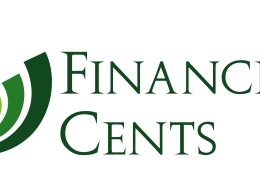Effective cash flow management can help small businesses navigate through financial uncertainties, capitalize on new opportunities, and sustain growth over the long term. However, it’s one of the biggest challenges for many small businesses. With limited resources and capital, small business owners need to be creative about optimizing their cash flow to keep their operations running smoothly.
This article provides small business owners with practical tips and advice for improving cash flow management. Read on!
1. Take Advantage Of Tax Loopholes
According to Credibly, there are many tax loopholes small business owners can take advantage of while adhering to tax regulations. This means navigating the intricacies of the tax code can unlock significant savings for your business. Work closely with a knowledgeable accountant to identify potential tax deductions, credits, and other loopholes you may qualify for.
For instance, Section 179 expensing allows deleting the total purchase price of qualifying equipment in the first year instead of depreciating it over time. This can provide a nice cash flow bump by reducing taxable income. Similarly, carrying operating losses forward or backwards to offset profits in other tax years offers significant cash flow advantages.
Taxes are likely one of your most significant recurring expenses, so legal tax minimization deserves due attention. However, watch out for strategies the IRS may consider too aggressive, as facing penalties and back taxes defeats the purpose.
2. Prioritize Debt Management
Excessive debt service costs can put a significant drag on cash flow. Develop a strategy to pay down existing loans methodically, starting with those that have the highest interest rates. Consolidating multiple debts into a single, lower-rate loan can also help accelerate repayment.
Additionally, taking on new debt has its risks; therefore, explore alternatives like invoice factoring to handle short-term cash flow gaps. You may want to consider visiting http://www.credibly.com to learn more about invoice factoring and other financing alternatives. However, when considering these alternatives, ensure you only loan what your revenue projections show you can comfortably repay on schedule.
Financing investments enables you to target high-return opportunities. With prudent planning, debt can provide vital fuel for expansion. However, uncontrolled debt obligations will quickly drown future cash flow.
3. Create A Comprehensive Budget

A detailed budget is among the most crucial tools for optimizing cash flow. It outlines all your projected income and expenses over a set timeframe, such as monthly or annually. Ensure you include fixed costs, such as rent, salaries, and utilities, and variable expenses, such as inventory and marketing. Additionally, build in buffers for unexpected costs.
Review and update your budget frequently as your business changes. For example, if you open a new location, you’ll need to add additional rent and payroll expenses. Or, if sales decline seasonally each summer, adjust your budgeted income accordingly.
With an accurate budget, you can make informed decisions about managing cash inflows and outflows. This level of clarity helps ensure you have enough cash on hand to cover costs without tying up excess capital.
4. Monitor Cash Flow Regularly
Monitoring your finances is crucial for cash flow optimization. Set up a system to track the cash coming in and going out of your company. Whether you use a simple spreadsheet or accounting software, checking your cash flow weekly or even daily provides invaluable insight.
You can spot trends in receivables and payables, forecast upcoming cash shortages or surpluses, and adjust accordingly. For example, if you notice customer payments slowing down in the summer months, you can plan to have a larger cash surplus to handle reduced cash inflows.
Regular cash flow monitoring gives you the data needed to make wise financial decisions. This vigilance helps you avoid potential pitfalls like missed payroll due to low cash balances.
5. Embrace Cash Flow Forecasting
Optimizing your small business’s cash flow requires looking to the future. Build on your budget by forecasting cash inflows and outflows. Review historical sales data, payment cycles, and seasonal trends to estimate future income. Factor in upcoming expenses like payroll, loan payments, and inventory purchases depending on vendors’ payment terms.
Forecasting provides visibility into potential cash shortfalls, letting you act before they occur. For example, you might delay planned equipment upgrades or request accelerated customer payment for a hefty invoice to cover an anticipated cash deficit.
Generally, you can make strategic decisions to avoid cash crises with routine cash flow forecasting. This proactive stance also equips you to capitalize on surplus cash periods.
6. Tighten Your Accounts Receivable Process
Optimizing cash flow also means reducing the time between making a sale and collecting payment. Start by clearly defining payment terms in customer contracts and invoices, specifying dates, acceptable payment methods, and penalties for late payments.
Make it easy for customers to pay by offering options like credit cards, online payments, and installment plans. Send professional but firm reminders as payments become overdue. Also, consider incentives like early payment discounts to motivate faster settlements and have a protocol for consistently pursuing late payments monthly.
The quicker you can collect outstanding receivables, the sooner you can reinvest funds or cover expenses. Tightening your accounts receivable practices also improves cash flow forecasting accuracy.
7. Negotiate Payment Terms With Suppliers
Consider negotiating extended payment terms with reliable suppliers to reduce pressure on current cash reserves. Ideally, you request to pay for materials or services after selling the product.
Before agreeing to discounts for early payment, analyze if you’ll recoup the upfront capital outlay from the discount to yield positive cash flow. Run the numbers comparing the discounted cost to the total if paying later without a discount and assess your upcoming cash inflows to determine if you can afford the early payment.
Negotiating better payment terms also involves understanding your suppliers. Vendors with high inventory turnover may strongly resist delayed payments, while start-ups with limited revenue history may only qualify for standard terms. So, leverage established and mutually beneficial supplier relationships to open a dialogue about flexible but fair options.
8. Increase Revenue Streams
Focusing solely on optimizing expenses will only take you so far. To maximize cash flow, you need to expand your revenue sources. Start by identifying potential new revenue streams that align with your core competencies. Could you expand into complementary products or services or tap into new geographic markets? With existing customers, analyze their purchase patterns to identify cross-selling and upselling opportunities. Also, implement a subscription or membership model to provide predictable recurring revenue.
Leverage your website, social media, and email marketing to showcase new offerings. Hire sales staff or expand sales commissions and bonuses to drive growth—partner with other businesses to create new bundled offerings with shared promotional costs. Pursuing a few high-potential ideas can significantly expand your revenue mix.
The goal is to balance growth with your operational capacity so quality remains high. Diversified income streams also mitigate risk since your business won’t depend on one or two products. A focus on growth rather than cost-cutting only is instrumental for meaningful and sustainable cash flow optimization.
9. Manage Your Inventory Effectively
Excess inventory ties up valuable working capital. Adopt a just-in-time inventory management approach to optimize cash flow and only purchase the materials you need to fulfill confirmed orders or near-term demand projections. Closely track how fast each product sells and adjust orders accordingly—use inventory turnover ratios to identify slow-moving stock.
Consider markdowns or temporary promotions to accelerate sales of stagnant products. Letting inventory accumulate leads to storage costs for raw materials and finished goods. It also increases the risk of obsolescence, damage, and carrying costs. Ensuring supply aligns with actual demand ensures you don’t have cash trapped in unproductive assets.
Also, lean inventory management complements strong supplier relationships. Reliable vendors allow smaller, more frequent purchases instead of bulk orders. With diligent monitoring and forecasting, you can maintain adequate stock without excessive surplus. Tight inventory control keeps cash available for other uses.
Conclusion
Cash flow optimization is a continuous process that requires attention and adjustment as your business evolves. By implementing the discussed strategies, you can enhance your financial stability, support growth, and navigate the challenges of the business world. Remember, the key to effective cash flow management lies in proactive planning, regular monitoring, and being adaptable to change.














